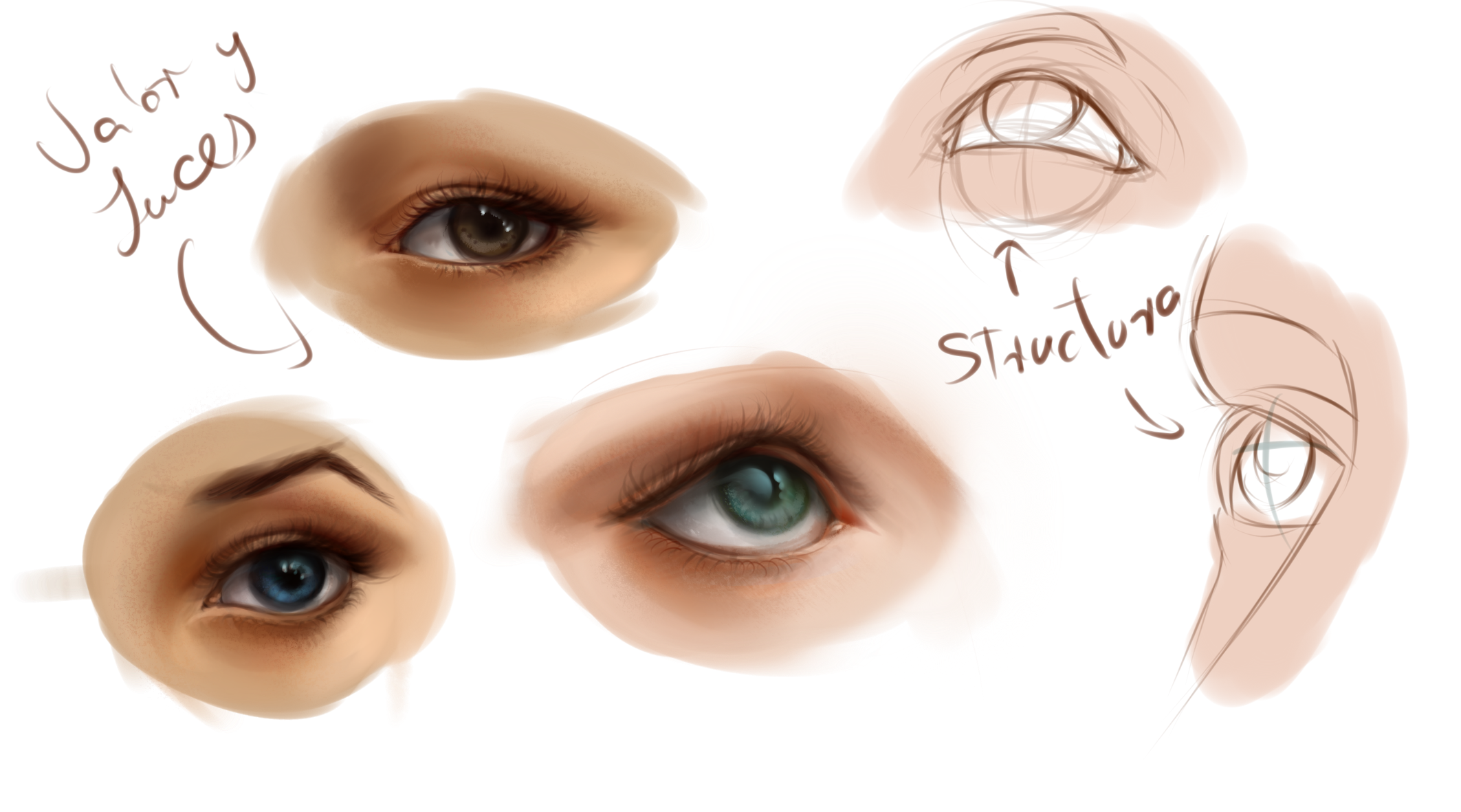This will be the second part of a class or tutorial that has helped me improve more in the art world. Here I will present the side of the values and colors of the eyes, in order to understand them better... or get more confused 😂, warning: it is better if you have already a basic understanding of light and shadows.

If you would like a better understand of the structure and anatomy of the eyes, here is the first tutorial on the subject.
Just click the image, there won't be a jump scare 😉
Now, if you already know the basic structure and knowledge, we can go to the most complicated part of the tones and values, we will probably suffer all here ... 😉
Before starting it is good to review the main areas of the eye and those that we should least forget.
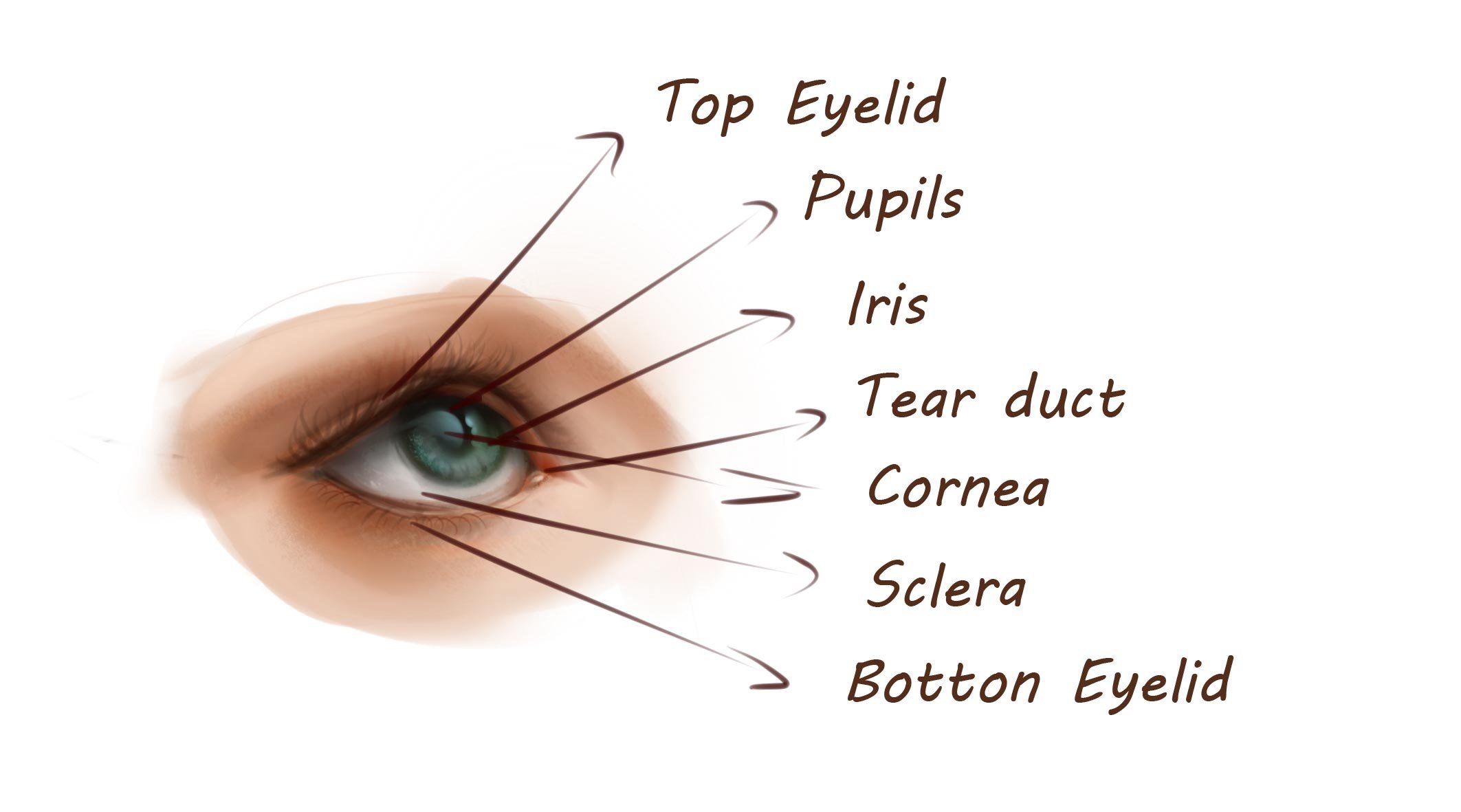
-Top eyelid.
-Pupil.
-Iris.
-Tear duct.
-Cornea.
-Sclera.
-Botton eyelid.

Valors
To paint well any part of the body we do not need a lot of knowledge of anatomy but a greater knowledge of forms, lights and shadows.
Although I will not go into depth with this issue as it deserves its own post, I will talk about the most basic and the ones we must take into account here:
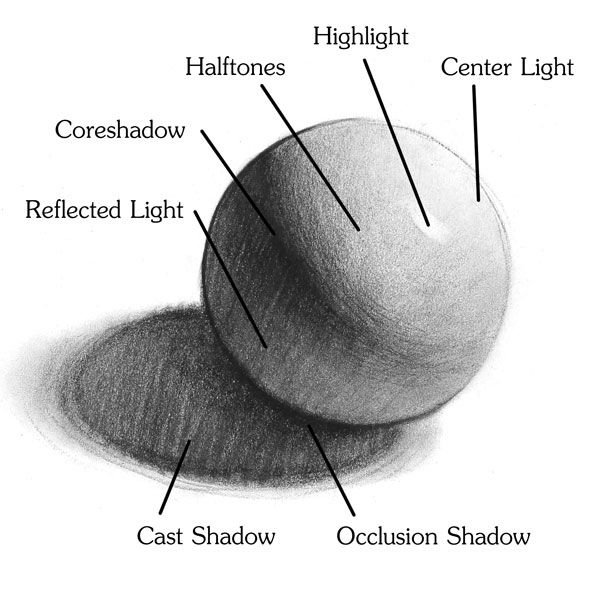
Center light: It is the area where the light will fall directly.
Core shadow: It is the second darkest area (after the occlusion) and tends to be found between direct light and reflected light.
The reflected light: When one object is close to another, the latter will tend to reflect a short light on the nearest side; an example is the lower area of the ball where there is a small brightness below. It is of great importance to remember it, without it you do not feel depth.
Halftone: This is the transaction between center light and core shadow. This is where we will usually see the textures.

Basic tones:
We start by making a basic or generic idea of everything, remember if it does not work in the basics it less will work with the details. Let's focus only on the half tones and the simple lines.
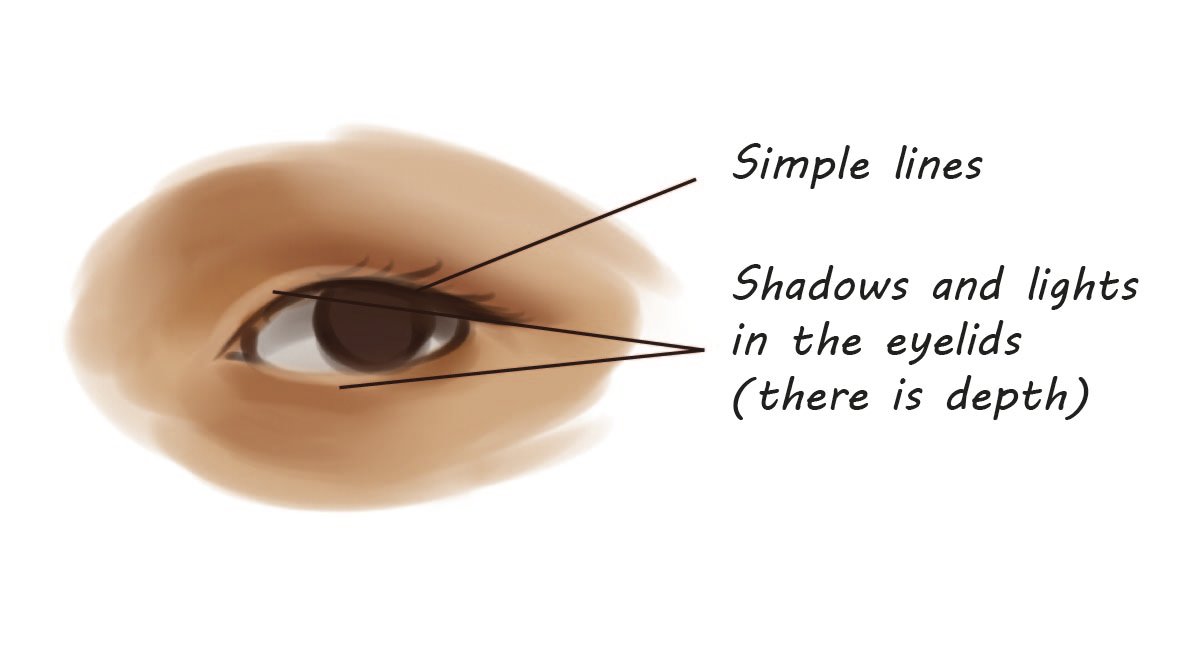
Tips
-We must remember that the eyelids wrap around the eyes, keep that idea.
-The shadows are not direct black; the shadows is where the secondary colors and lights are noticed; We have to add a tone that gradually goes to the ambient color.
-We must remember that we are working with an ocular sphere and therefore it has the nature of a sphere, it is good that we respect its curvature including in the shadows.
-I repeat: start with the basic idea, DO NOT GO TO THE DETAILS.

Make more contrasts:
Here we work with center light and shadows. We can do it with Multiply, Color Dodge and Overlay. (Or simply do it manually if we already have a better idea of what we want to do)
- Use the multiply for your core shadows.
- The Dodge Color for center lights.
- The overlay for halftones.
(Remember to use these with little or moderate opacity, depending on your tastes)
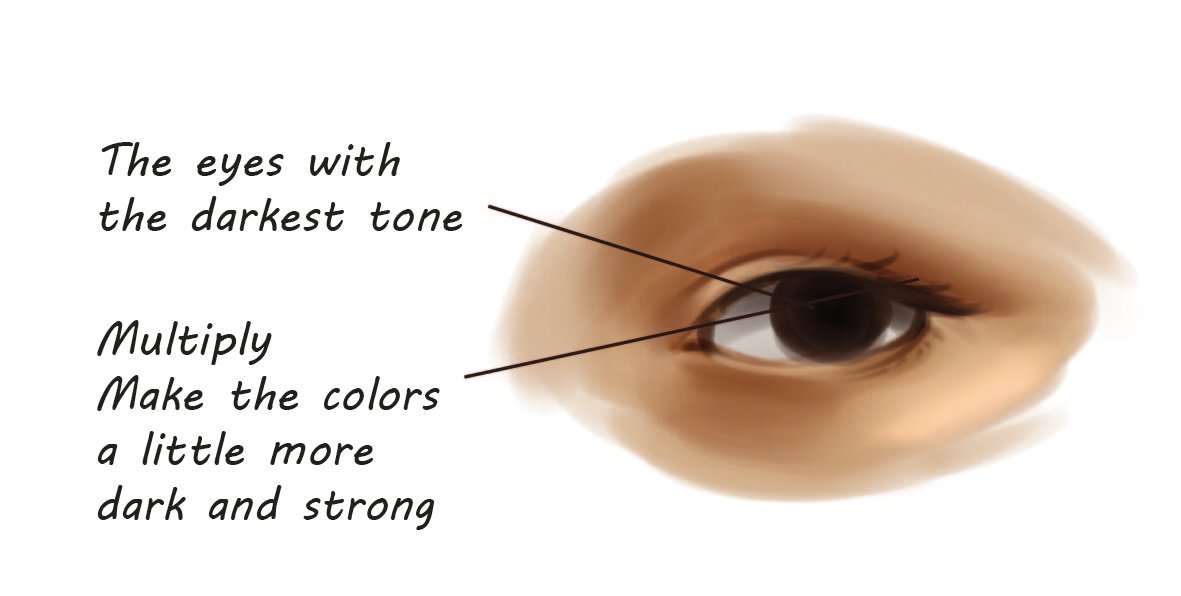
Tips:
-In order for the skin to have life there must be areas of warm and vivid tones. The skin is a combination of warm tones (reds, ochres and oranges) and cold tones (gray or blue gray)
-It is much easier to work from the darkest to the lightest, in the iris of the eye and in the hair is a very useful trick.

Blurs:
This is the most sweet step of all; we just merge all the previously layers and make a copy of it. With a soft brush we begin to blur the skin; when we are satisfied, just lower the opacity and let the new layer diffuse with the one below.
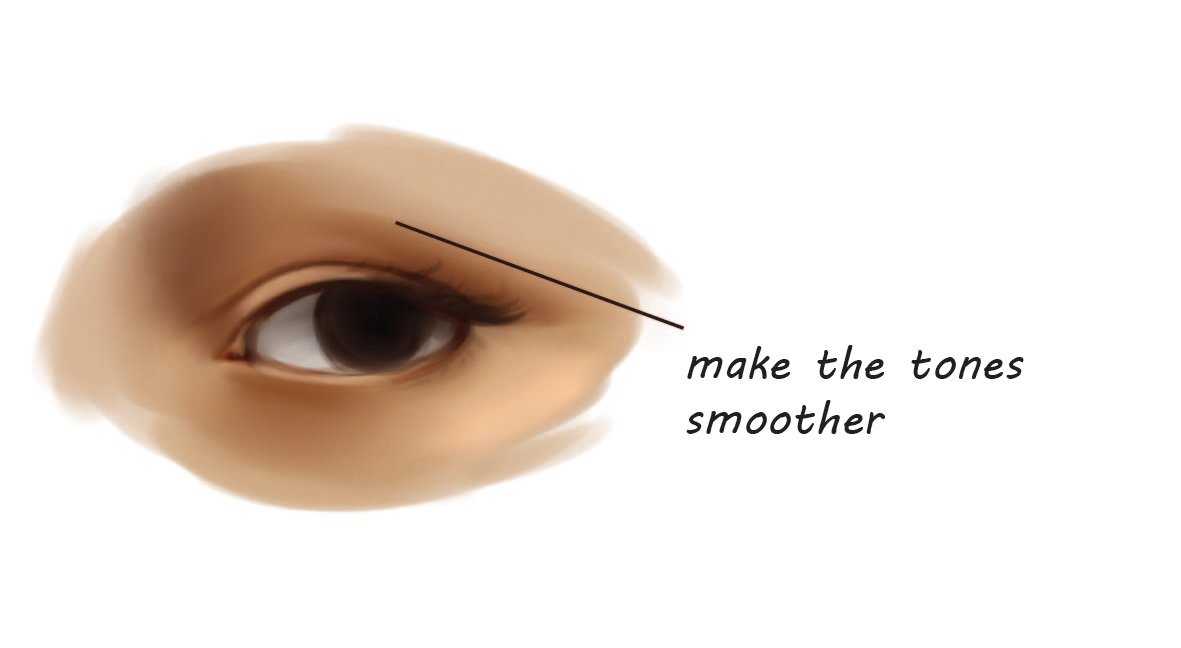
Tips:
-We try to maintain the difference of tones, do not exaggerate with the blur.
-Use a small medium-sized brush.
-With a soft brush we can also add a little more ambiental tones or warm tones to add more life.

Iris and Eyelashes:
Now it is time to start with the details : D, since we have the basic tones and idea, we can make on this the details we need.
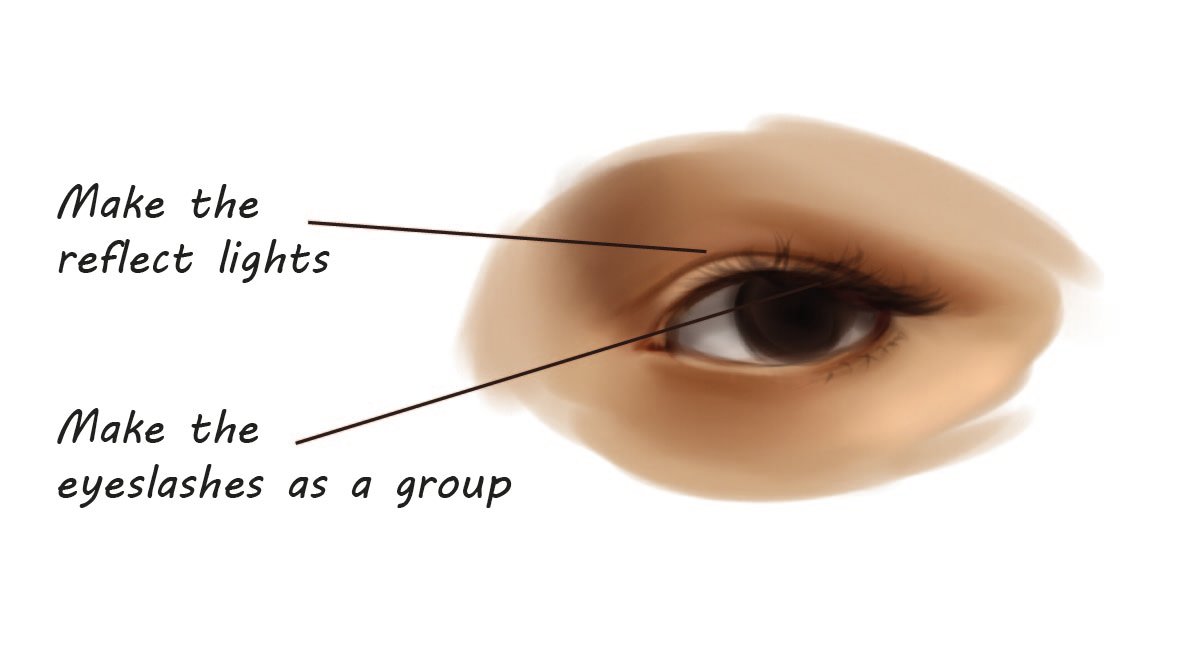
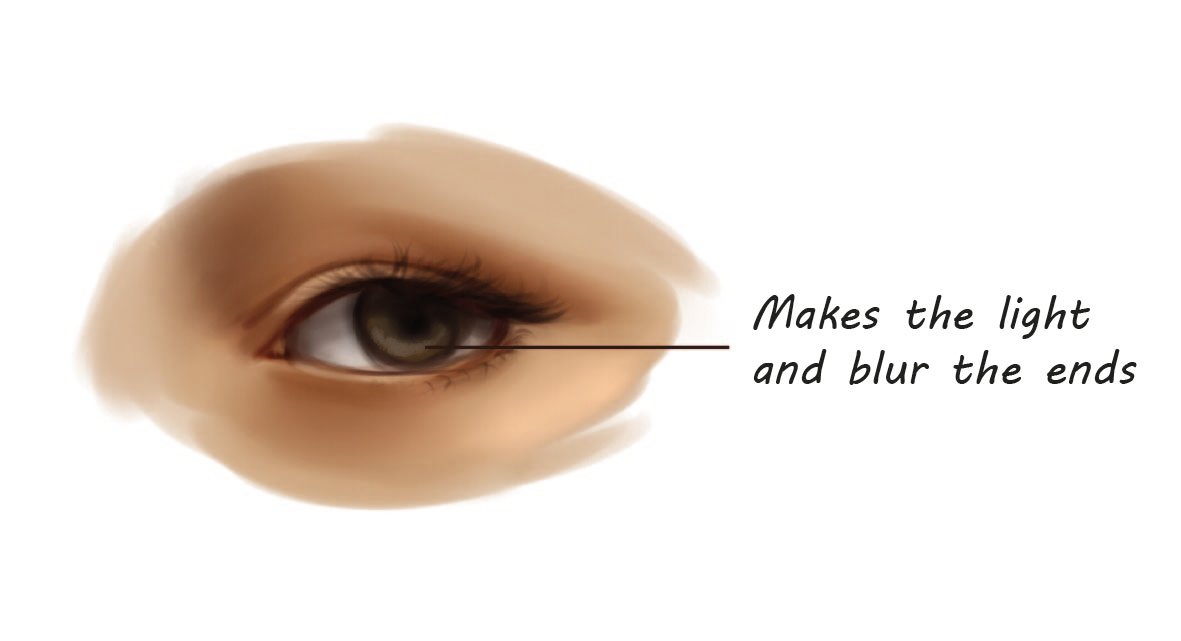
Tips:
-Don't forget to respect the reflected lights. The eye shows a little reflected light where the depth of the eye socket is.
-It is a common mistake to make the eyelashes with separate strokes; to make the eyelashes and the hair we must start with a dark block and then we break the edges with freer lines.
-It is better to start from the darkest to the clearest, not only in the eyes but also in general, here we will use it specifically in the iris.

Textures:
Now we will do what people usually to do from the beginning: D .... Please tell me that you were patients ...; this stage we can do with the color picker, a small or with textured brush.
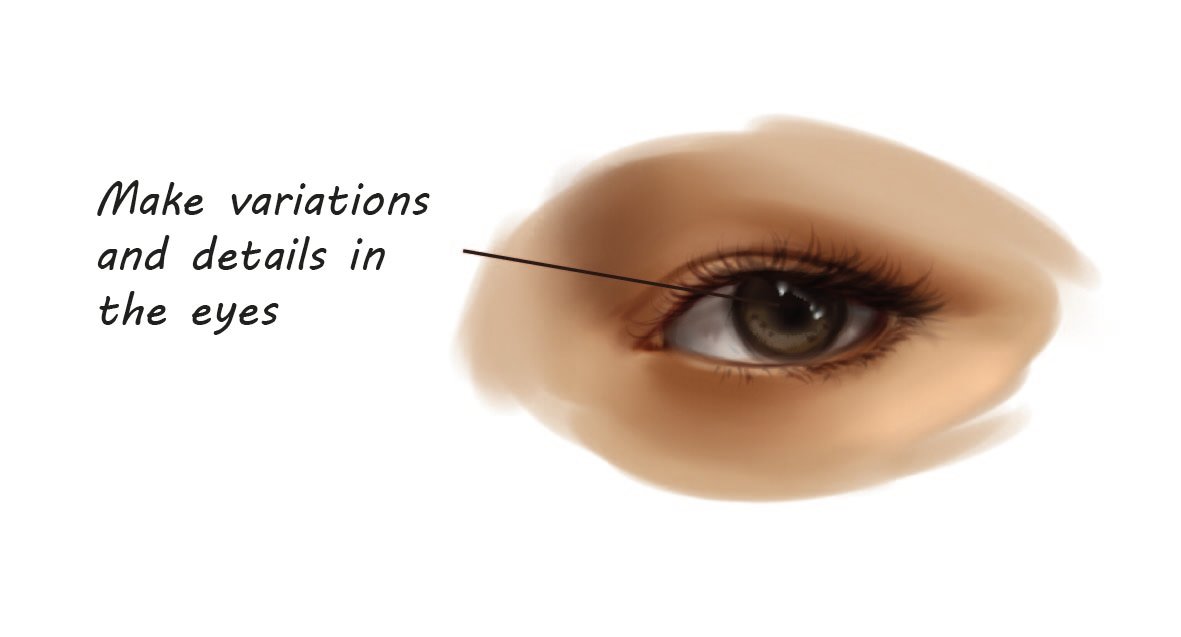
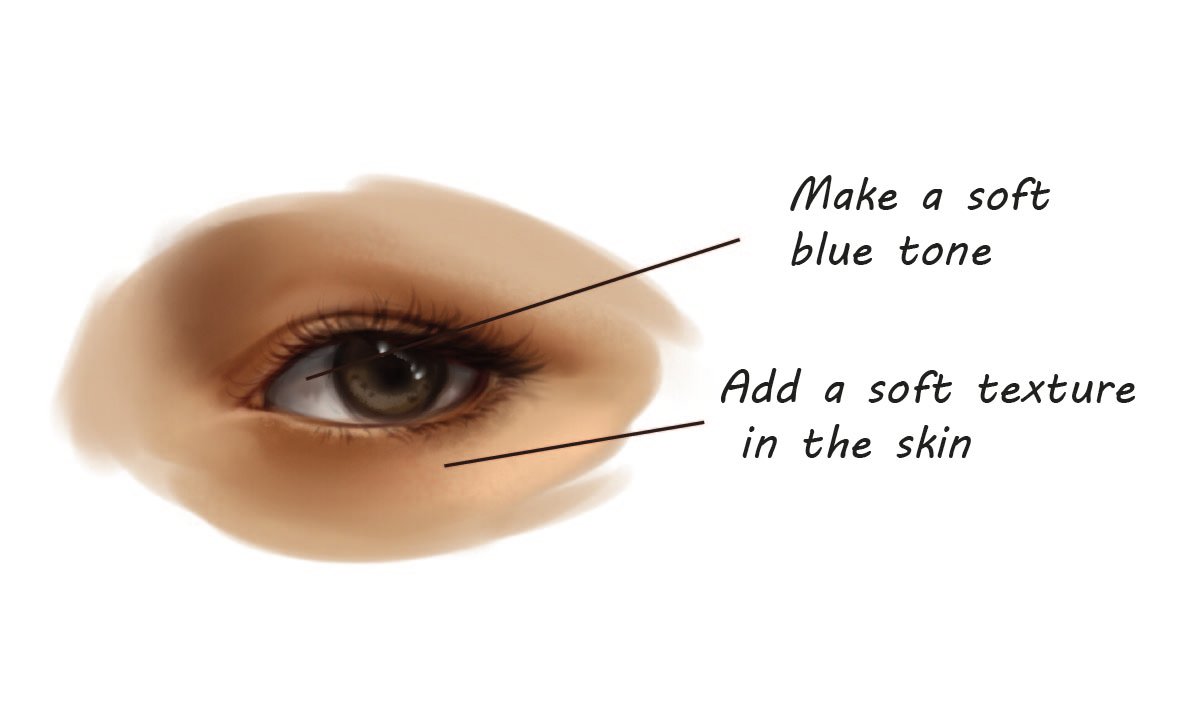
Tips:
-With Color Dodge, we add a little highlight to the upper side (the effect of the cornea) and we can blur one of the edges for a better effect.
-The edges of the pupil and iris are blurred or make a gradual change.
-Any texture is more noticeable is in halftones (in the center light and core shadow there is almost no texture or none at all)

I know it's a very complex topic, and most likely for those who already know the basics. If you need more basic information, you can always check the estructure of the eyes post 😉
gif and Process:

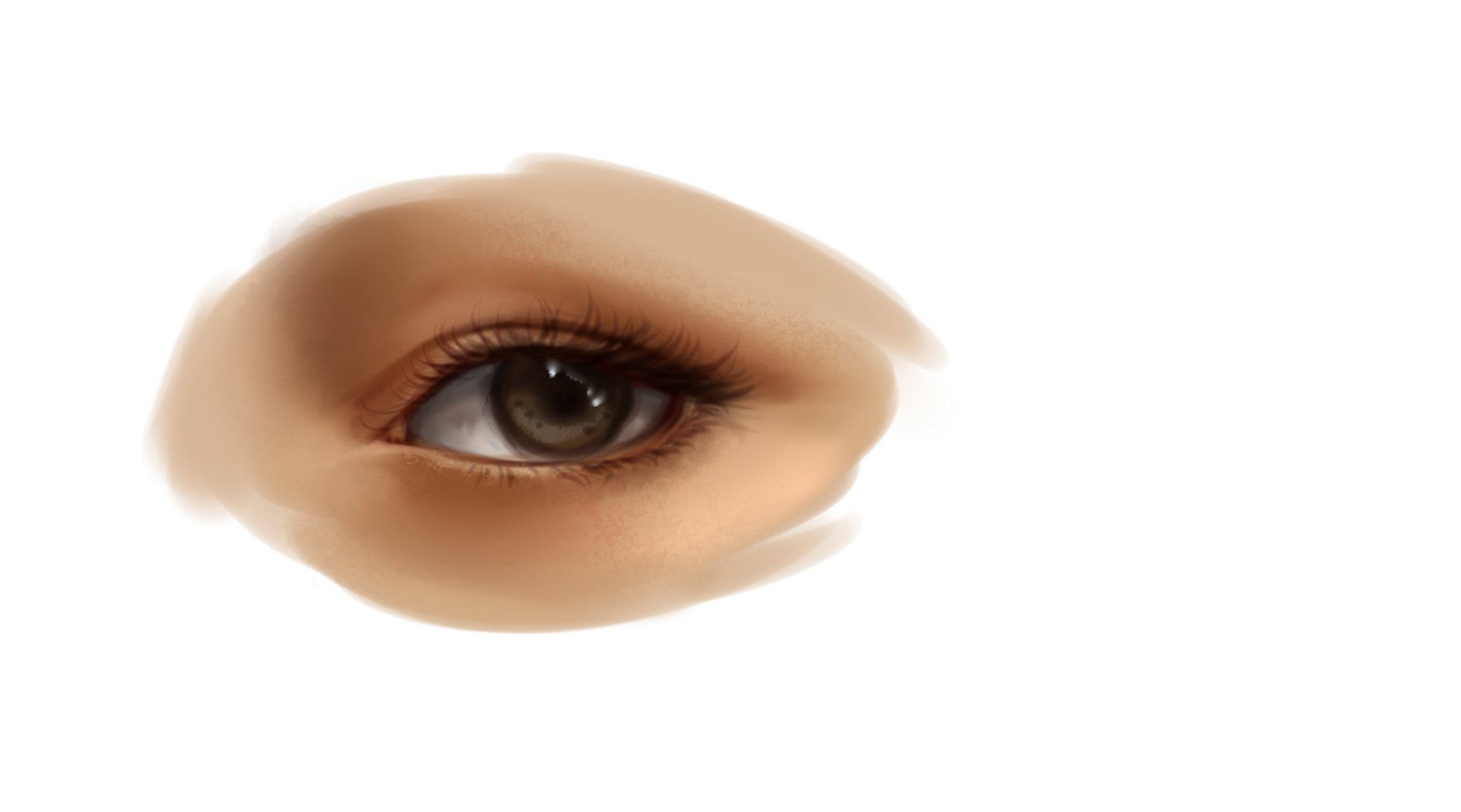
Copyright @edanya - All Rights Reserved

